For the 100th Watch Affinity article, I wanted to do something special. Recently, I have been doing a lot of work with the support of Pietro Tomajer at The Limited Edition, who has helped me with access to independent brands and watchmakers, and even helped me to attend this year’s GPHG Awards!
A true gent, Pietro has been brilliant with me, and so to mark this landmark article for Watch Affinity I sat down with him for an extended interview, to learn more about his career and what makes him tick. I hope you enjoy!
In Conversation with Pietro Tomajer, Co-Founder of The Limited Edition
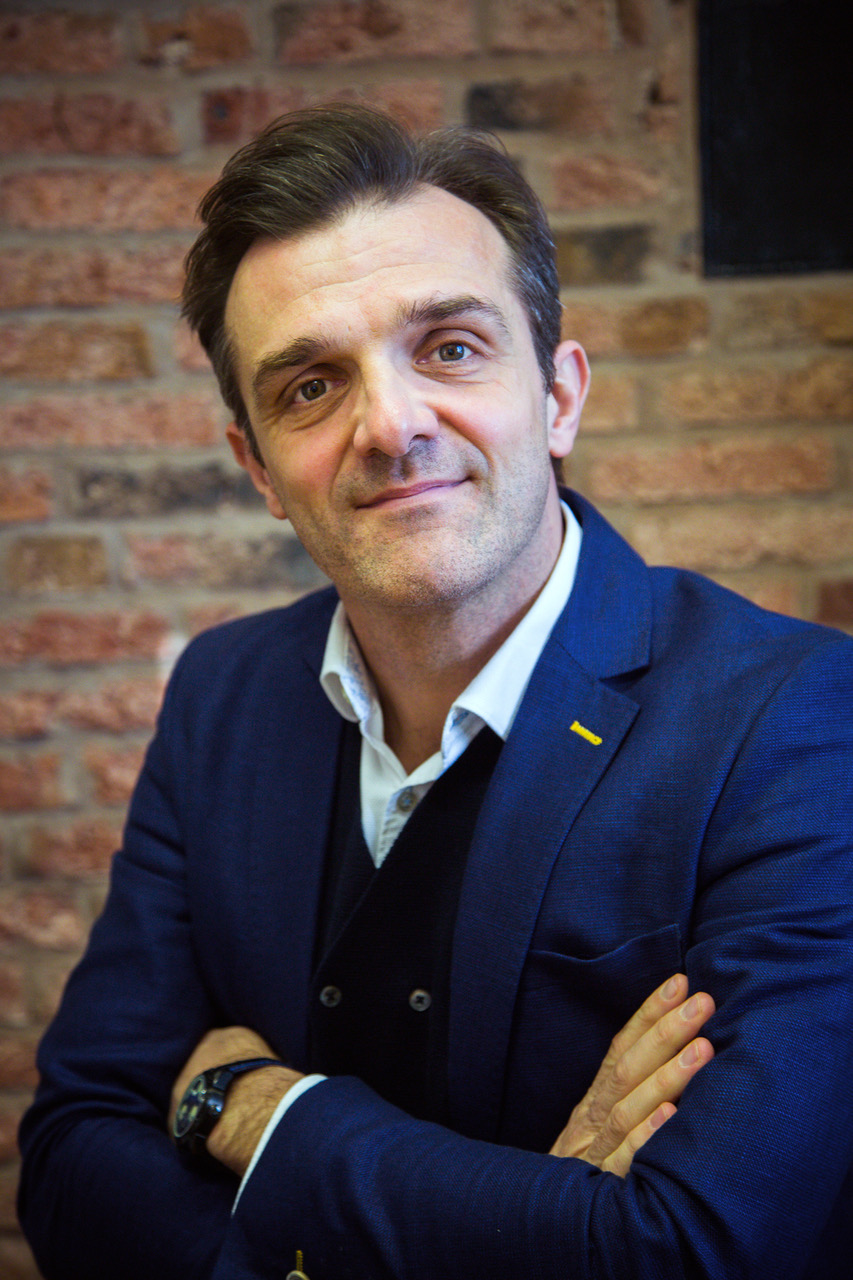
Pietro Tomajer, Co-Founder of The Limited Edition, photo - The Limited Edition
WA: To start with, for those who are perhaps unfamiliar with yourself and The Limited Edition, why don’t you tell us a little bit about your journey from your start in Italy to where you are today?
PT: I got into what I do today by being the person I guess I was in the 90s when I grew up in Milan. I was very interested in alternative cultures in general, especially related to music and somewhat to art as well. I was in a band playing guitar, I used to love rock music and I was always looking for niches where I could fit in rather than the mainstream ideas that were passed through the radio and television. That has been my mindset since I can remember.
I got into watches when I saw my dad coming back home one day in the 90s. He got a bit of a bonus and he liked mechanical watches. I remember him going to Milan and getting a Girard-Perregaux 7000 and I remember his face when he came back home, a face that I had never seen before. That triggered something in me, and my dad talked about the other watches that were in the family from my grandad or other relatives. I had my first hint of ‘I want to know more about this’. I had a couple of nice presents when I did my exams in Italy and graduated from university, and those were both watches.
I started to have more of an interest, and then completely by chance I joined the Richemont Group in 2002, because I was fluent in Italian, French and English, with a bit of Spanish as well. They took me on board, and they taught me a bit of everything regarding the luxury industry. I soon understood that I wasn’t made for climbing the corporate ladder if you like, but I got really into developing small brands in quirky markets at the time. I mean markets that were unexplored at the time such as Middle East, eastern Europe, Russia as well, and I started to travel the world creating my network.
It became apparent to me that I was good at building bridges and developing brands. Then I moved on to work for Girard-Perregaux which was interesting.
WA: That’s a nice symmetry with the brand of your dad’s first watch!
PT: Exactly! Girard-Perregaux was independent at the time and I felt I had something for independent companies, that entrepreneurial spirit fascinated me. With the Macaluso family… we got on so well, and I really had a lot of admiration for those who had the guts to develop projects on their own. Girard-Perregaux at the time was fully focused on becoming an in-house manufacture 100%, and it was a massive endeavour. You can imagine then in 2008 when the financial crisis hit it became nearly impossible which is why Girard-Perregaux was then acquired by the Kering Group.
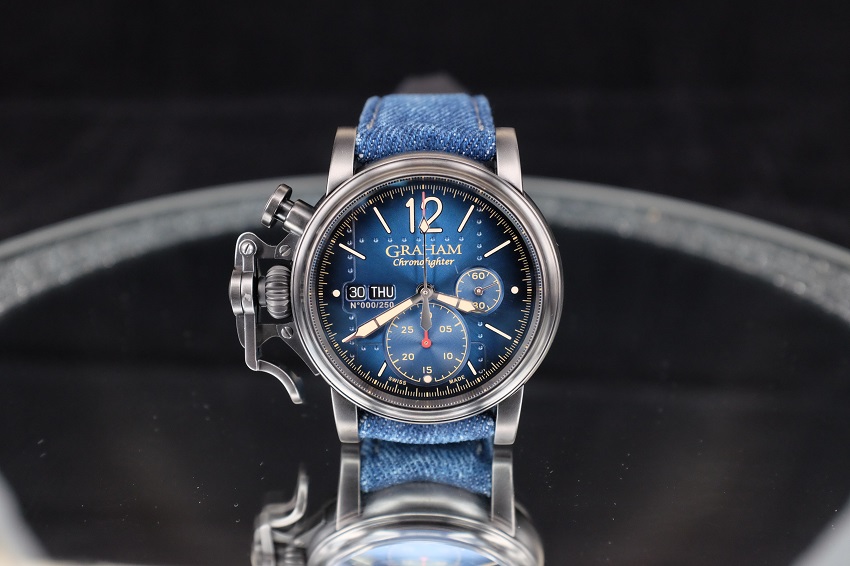
Graham Watches, photos - The Limited Edition
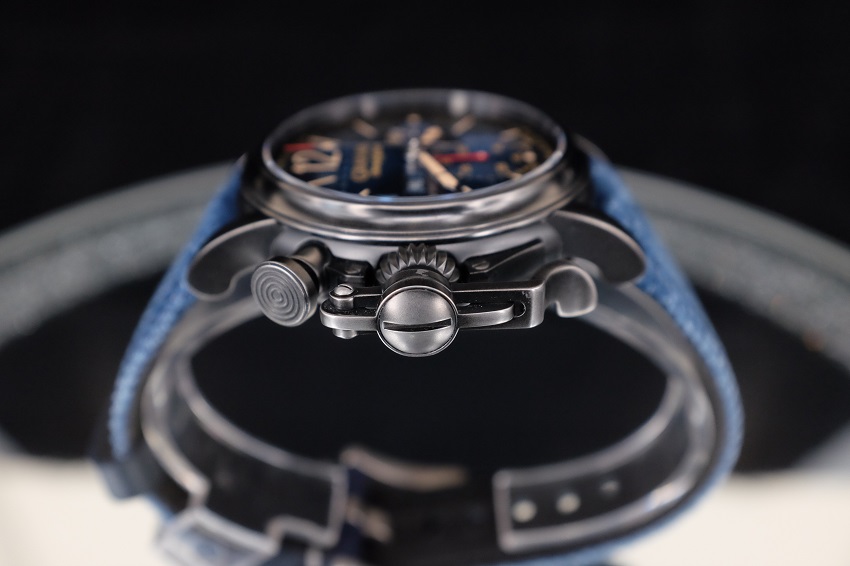
I moved onto a smaller brand, Graham, to develop their platform in the UK, and still in Asia, the Middle East and Russia. In those years, I learned a lot from Eric Loth who was the co-owner and co-founder of Graham. In 2014, when I explained to him my idea for the future and what I wanted to do with The Limited Edition, he let me develop that on the side which is a gesture I will never forget. From 2014, the rest is history. We set up The Limited Edition and I became independent myself to close my journey.
WA: It’s a great story. Do you think where you mentioned in your childhood where you were into the alternative arts and cultures, do you think that is the biggest draw to you for independent watchmaking, that freedom to express oneself through watchmaking?
PT: I think so. When I started at Richemont, the thing was about luxury – they were proposing luxurious products and theirs was a culture of luxury that didn’t quite sit with me in a way, because luxury is not my driver at all – it never has been.
I was interested in understanding how luxury is justified by the level of quality that is offered, which pushes you to educate yourself and understand why something has a certain value. Now, with The Limited Edition and promoting quirky, unexplored brands and watchmakers, they can be luxury, or they may not be. For example, today I am wearing a Studio Underd0g ‘mint choc’, £400 and it’s absolutely affordable for being an independent watchmaker of quality. It’s a Chinese manufacture movement, but if you hadn’t told me it wasn’t a Swiss made, I would probably not have guessed.
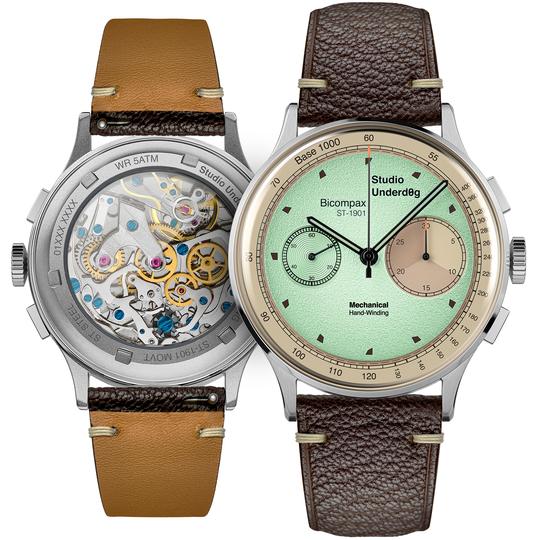
Studio Underd0g Mint Ch0c Chip, photo - Studio Underd0g
When I was at Richemont, and even Girard-Perregaux, I was employed by them and there was an agenda, there was a culture that the company wanted to transmit and I was one of the vehicles for transmitting that culture, which was mine to a certain degree, but it was primarily the culture of the brand or the group. Whereas with The Limited Edition, the culture of what we have done is completely me. That’s why I put my face on it because it is completely, 100% aligned with what I believe.
I believe watchmaking is a form of art, and as a form of art I believe that creativity should be the main driver. Taking risks should be the exciting thing that arrives from developing watchmaking. We become a vehicle of this mindset if you like, and when I go out and talk, I don’t have an agenda I just talk honestly about what I like, what I don’t like, what I agree with, what I don’t agree with. I have shaped The Limited Edition so that this can transpire without any contradiction.
Also, the fact that we decided to start promoting without taking the burden of investing in big stocks like other platforms or stores would have to do, gave us really the freedom of expressing our opinions – we are not on an agenda of having to sell one watch or the other otherwise we can’t get to the next month.
WA: So really for you it’s about connecting people to the watches they want and then making it happen, rather than putting something in front of someone and saying “you want this”
PT: Absolutely, that’s exactly the idea. It doesn’t mean that we don’t have watches in stock, but the first trigger is always to present the brands, gauge the interest, educating, gauge the demand, and then, if the demand is there, our function is to facilitate.
WA: It’s interesting, I have read interviews with Jean-Claude Biver where he talks about his days in Audemars Piguet and Blancpain, and back then a really integral part of his approach was making sure that people understand the product before getting to the point of saying “here’s the product”. Is that similarity something that was a conscious move?
PT: For me, the moment where I put my face on it, it doesn’t matter what you purchase from The Limited Edition, or when, or how, I have to be at ease with that purchase forever. I have to be at ease with the fact that you have made a free decision based on the education that we have contributed about that brand, and it wasn’t something that I had to push because it financially made sense for me, and you weren’t enticed by an aggressive marketing strategy.
It sounds like I want to be the good guy, but it’s not that. Marketing today is all about being genuine, and it’s all about taking responsibility for any purchase. We live in an era where you can buy anything and send it back the day after because you have all the rights to do that quite easily, so it would be against our philosophy to push stuff that we don’t believe in. That’s the reason why we do a lot of things, we have over 60 brands now – it’s not because we want to do everything, but we want to give the largest environment for people to find what they really like and how this compares to all the rest.
We have lost brands too – we were Moser official retailers, but we lost Moser because one day they wanted us to either invest a big amount of money in stock that they would have decided for us, for us to then push out into the market, or we could not be called official retailers. We went the other way. We don’t believe it is right with the concept that we are trying to develop.

You can go to the best store in the world, even if they have 15 brands that they have bought stock for, my experience as a customer and as a collector is that they will never push something that is not in the store. That’s nothing to blame them for, they’re doing their job, but I think there was a hole there, that we could fill by changing the philosophy.
Passion can’t always be about a functional purchase, but it sometimes has to have something to do with the human experience that comes with it.
WA: You’re right, that is a really important part of it as well. In that essence, were there any lessons you learned whilst you were at Richemont that stuck with you and resonated with you?
PT: Yes, it’s difficult to single out one, but I think at Richemont firstly I totally understood that the culture and the knowledge of the product and the producers are paramount. The second is that you should always think long term when building this knowledge and culture, without just focusing on the next sale.
We need to understand that, for the person that proceeds with an expensive purchase – sometimes in incredible occasions such as a graduation, a marriage, or to pass onto the kids – the best moment is when they finally get the watch with them. Thinking that once you deliver the watch it’s all done for you is a big risk.
What I’m getting at is that I learned that long-term thinking and a responsibility for what you generate through your actions is really key to resist and to keep your reputation in this business. There’s no such thing as a quick sale because you can get away with it once, maybe twice, but then it always comes back to you.
WA: So, something a little different now, is there a brand or watch that you can trace to a moment where you found your passion for independent watchmaking when you saw it? For me, when I first started looking at watches, it was probably MB&F and Ludovic Ballouard that completely changed my paradigm as to what a watch can be, and I wonder if there is something similar for you?
PT: For me, it is not too dissimilar. I think, thinking in terms of independent watchmaking, when I met Christophe Claret for the first time was a big thing. When I met Christophe Claret he was already an independent for quite a while, and he was making ultra-complicated pieces for Girard-Perregaux, so the Three Bridges Tourbillon was made by Girard-Perregaux in house, but then the Opera, the Jackpot, and some of the other crazy creations, minute repeaters and slot machine mechanisms, were done by Christophe Claret.
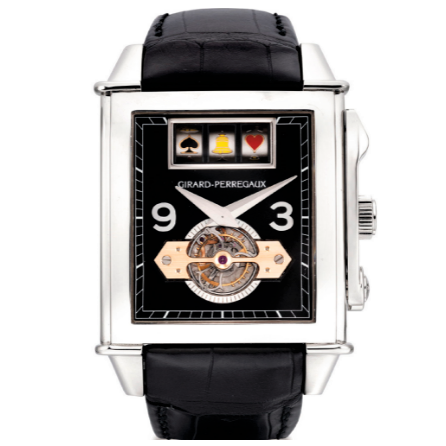
Girard-Perregaux Jackpot, photos - Christies
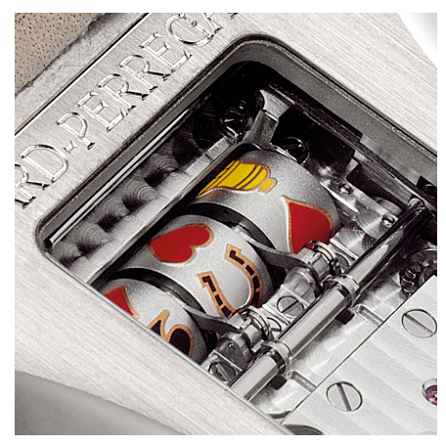
I think that caught me by surprise because although GP was independent at the time, I didn’t have a concept in my mind of what it means to be independent. I didn’t know Vincent Calabrese, I didn’t know Svend Andersen, I barely knew Vianney Halter. Meeting Christophe Claret, I started to reflect, and I remember hearing about Andreas Strehler as well, and then through Max Büsser and understanding the OPUS saga and what it represented, and all the names that were behind that – Felix Baumgartner, Vianney Halter and all the others.
Although I was already completely in an environment of independent watchmaking with the Macaluso family at Girard-Perregaux in 2007, it’s just that there wasn’t such a concept in my mind yet and such a separation between what Richemont was doing and what these other watchmakers are doing. Those were the formative years for me, so I would say Christophe Claret, and probably Andreas Strehler were the ones that started to resonate as independent watchmakers for me.
WA: You mentioned earlier the smile you saw on your dad’s face when he bought his watches home. We both know that smile, and when you see it on a collector’s face then they’ve found the watch that they need to have. Which watch puts that smile on your face?
PT: Wow, there are so many! When I was at Girard-Perregaux, once I remember I was given a watch by my manager at the time for achieving a very good target, and it was a triple date vintage with a square case, and it was a great watch. When he came to me, and after what I remembered about my dad, that was like closing the circle.
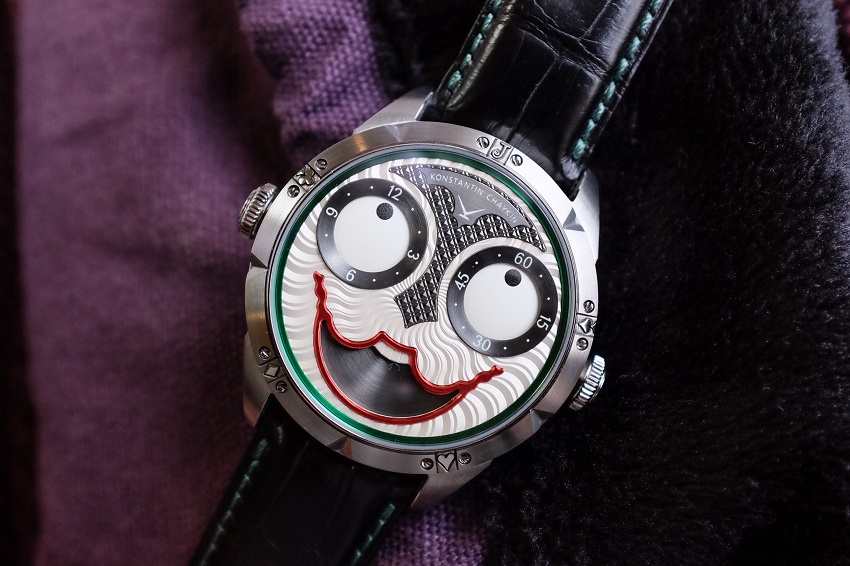
Konstantin Chaykin's The Joker, photo - The Limited Edition
And there was one massive one, of course the Joker by Konstantin Chaykin. It’s another massive one for me, we did a limited-edition Night Joker of 50 pieces, and I still can’t believe we managed to do that. We sold 40 pieces, and we still have to produce the last 10, but I don’t know if Konstantin has the time and the will to produce them (laughing)! I kept my one on the side, and I sold it to make a collector happy, hoping that in the last batch of 10 there would be mine if you see what I mean.
Girard-Perregaux is everywhere on my personal development if you like, and it resonates personally. For The Limited Edition, Chaykin and The Joker was the story.
The Joker is The Limited Edition. It was all by chance, when I started The Limited Edition only a few brands would even talk to us and Chaykin was one of those saying, “yes why not, just do it and put it on the site!” I had just 4 brands when we started – Graham, Cvstos, Chaykin and Strehler. Graham because I was hired by them at the time, Cvstos because I had a friend working there at the time and he said he would support me, Strehler and Chaykin. This was the start.
And The Joker – now it’s easy in hindsight because The Joker is The Joker, it’s a legendary independent watch now, but in 2017 when it came out most people were laughing about it. We were brave enough to believe in it. I have always thought that that was the DNA of the independent mindset.
It has everything, it’s got a bit of pop art, it’s outrageous, it’s creative, and it is quality.
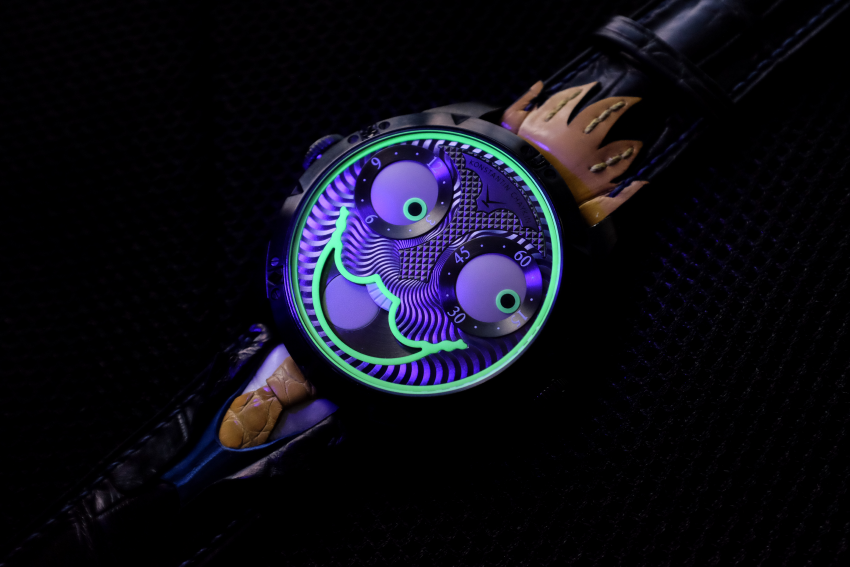
Konstantin Chaykin Night Joker, photos - The Limited Edition
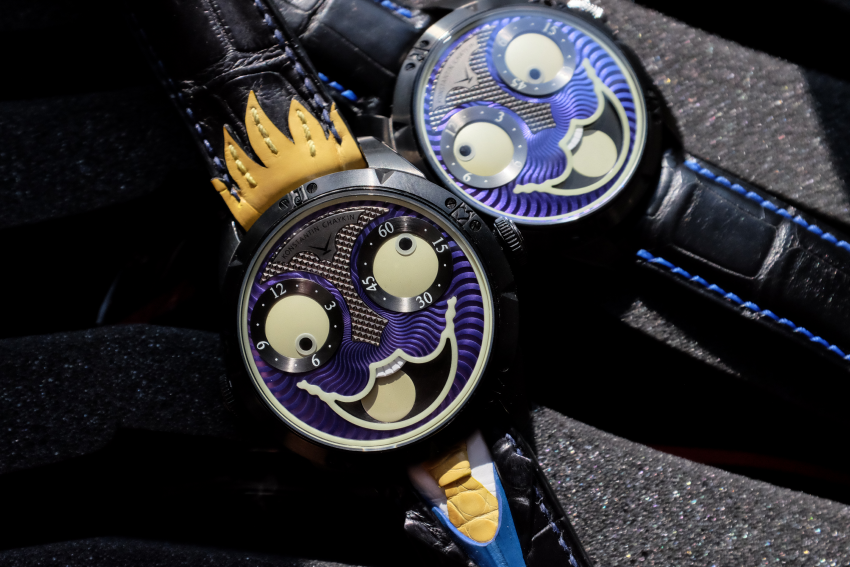
WA: One of the biggest attractions that I find with independent watchmaking is the accessibility of the brands and your ability to speak with them and have a conversation with them. Also, that the watches are, for the most part, attainable. I was thinking about this from your perspective – it must be immensely satisfying but also quite frustrating seeing how much of a boom there has been in independent watchmaking because on one hand it affirms everything that you have believed in, but on the other hand, some of the watches that were previously attainable are becoming unobtainable. I was interested to get your thoughts on that because it is very much a double-edged sword…
PT: You’re exactly right and this is the process we’re going through at the moment. There are two priorities – one to deliver on the promises we have made, and the fact that we can make things happen. As you know, we try to give people opportunities to acquire what they like in advance, before it becomes hyped up or manipulated in terms of the price.
The second priority is to keep doing what we were born for, scouting new stuff, scouting creativity. F.P. Journe is amazing, Philippe Dufour is amazing, but they have already been discovered and they have been put out of reach for everyone, so what is the contribution that we can give on that? Nothing, except if we find one or two pieces and try to make it happen for our collectors.
The idea is to keep that critical look on things and help those that we believe will be there in five, ten, fifteen, twenty years. As a form of art, watchmaking will never stop progressing, especially when we are talking about the independents. Every day I ask myself, what are we doing for our audience to feel like they’re in good hands and they can have fun with? Today, I can talk about Laurent Ferrier or Armin Strom, but I’m also going to talk about a random watchmaker that they’ve never heard of, not necessarily to sell a watch today but to start planting the seed for the future.
As an analogy to watchmaking, art is the same thing. Watchmaking is an art, and I believe like Picasso became fundamental when he started to flip shapes in a crazy way with Cubism, I believe that Konstantin Chaykin with The Joker will be remembered for The Joker. And for me, if TLE can be that platform getting these hidden stories out first, to create and expand this culture of alternative thinking in this formidable form of art which is watchmaking, I would be absolutely fulfilled.

Laurent Ferrier watches
WA: I love that, and I guess it’s that drive to educate that got you appointed to the GPHG Academy to reflect that work that you’re doing. What did that mean to you personally?
PT: Yes, I’m obviously proud of that, and today there are 500 Academy members. We are seen and our voice is heard, and I think we have become the ambassadors of the independents and being in the GPHG is kind of a seal if you like. It gave us a lot of confidence to be honest with you because when we started, for 2 or 3 years we were selling nothing. I’m not a watchmaker myself – from the technical watchmaking level I have a knowledge that is average… I like the look of a mechanical watch movement, I understand how it works, I can recognise nice finishing from rough finishing, I can recognise the mechanics, but I’m not the guy defining himself as the ultra-expert.
When we started our broadcast, we called it “The Imposters” because the only thing we do is to facilitate and to magnify these incredible stories we see out there. You talk about Ludovic Ballouard and you go and dig a bit on his personal story. Vianney Halter, Svend Andersen, Max of course, it’s just amazing, and we know that these pieces, like all the quality timepieces that were made two hundred, three hundred years ago are all in museums – these pieces will be in museums one day.
These stories will be told for generations, and we would love to be remembered as the ones that were the first to talk about them. And yes, having the GPHG Academy membership is a sign that what we do and believe in is not completely crazy or unacceptable, and there is a space for our little stories to be told.
WA: It’s amazing to think for sure. My last question would be what do you see for The Limited Edition in the next five years or so? The area that you operate within in independent watchmaking is taking off, and you mentioned that you’ve gone up to over 60 brands now; when you and I first started speaking I think you were on about 40 brands. You’ve obviously taken a lot on recently and I wondered where you see the future of The Limited Edition taking you?
PT: Again, to have an analogy with art, I see us not as promoters of one name or another like how an artist would have a solo exhibition. I see us as a generalist representation of a genre, and the genre is independent watchmaking.
You know the strange feeling when you go to a Breguet boutique, or a Richard Mille boutique, and you feel that pressure coming on you all of a sudden, because you’re only going to have one conversation in there? We want to give the opposite – we want to create an environment where different tastes are represented for different inclinations to watchmaking. I want to increase that even more in future and keeping our pressure very low on having to push one or the other.
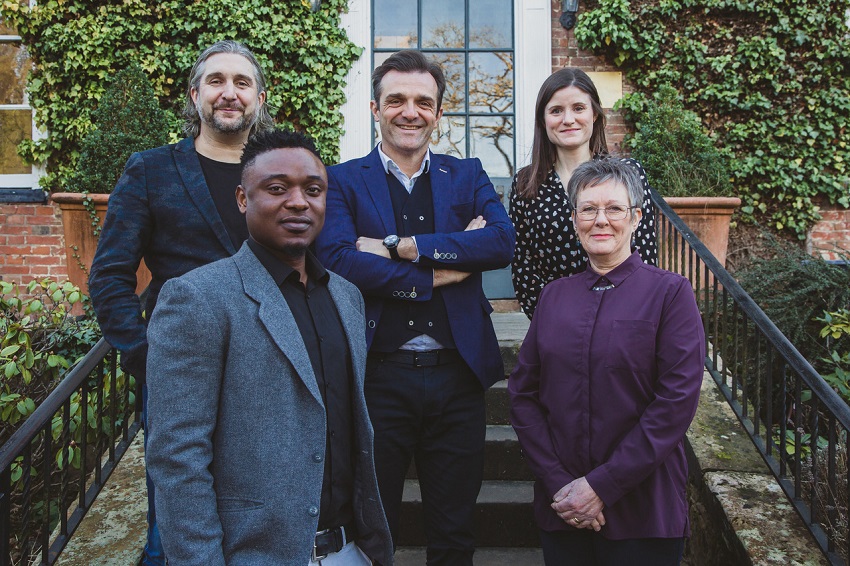
Pietro with some of The Limited Edition team
The risk is to not give enough attention to everyone in terms of the content that we create and the education that we can provide on those brands. We are structuring The Limited Edition and we are growing every day so there’s already 10 people involved with me, and we are tightening those links with people like yourself, like Scottish Watches, the watch brands that have always been intrinsically linked to what we are doing, and we want to grow that organically.
In five years? For me, it’s always been the same. I want The Limited Edition to be the place you’re going to check first when you’re looking for something incredible. Something that you wouldn’t find anywhere else because only the crazy people at The Limited Edition would even consider it. If we can achieve that, we would fulfil our mission.
Also, I know that some of the brands like you said that will become larger than life, they’ll become very successful, they’ll change ownership, they’ll join a group. We are prepared and I don’t have to think that we will depend on one or the other brand, but I believe that we depend on the concept.
WA: So when you work with a brand that ultimately goes crazy, your search for quality will hopefully include the next big thing being brought into your stable, and you’ll educate people on that and hopefully help them to get involved before it goes crazy.
PT: Of course, we always respect those that go bonkers, and we will be proud. I mean look at Laurent Ferrier, Czapek, Armin Strom, we will be proud for having participated. Even Moser, we did our bit. But yes – Picasso, is Picasso attainable today? I don’t think so. And yet there are thousands of incredible artists that have not even been considered that are there, and whose stories are worth being told. For instance, the recent story of Hilma Af Klint whose work was only discovered recently as possibly the first abstract artist in history.
If we can be the one to tell those stories, we will be very satisfied.
WA: I think it’s amazing, and as I have said to you before I think you’ve done a wonderful job with what you’ve produced with The Limited Edition, and when I was first learning about this stuff I spent an awful lot of time on your website reading up and learning, and it was the first place I used to go to when I was looking at independents, so as far as I’m concerned, you’ve done that already for me. It has been an absolute pleasure Pietro – thank you very much for speaking with me!
PT: No problem, thank you very much!
To learn more about Pietro Tomajer and The Limited Edition, please visit TheLimitedEdition.co.uk or follow The Limited Edition on Instagram.
Share your thoughts with us via our Contact page, or via our Instagram
Don’t forget to check out the Interviews Page for more!
You might also be interested in:
- Independent Watchmaking – An Ode to the Indies
- In Conversation with Jean-Claude Biver
- Laurent Ferrier Manufacture Visit
- Watch Stationery and Gift Ideas
- Watch Books, Watch Boxes and more at the Watch Affinity Shop on Amazon (commissions earned)
As an Amazon Associate, I earn from qualifying purchases – thank you for your support

